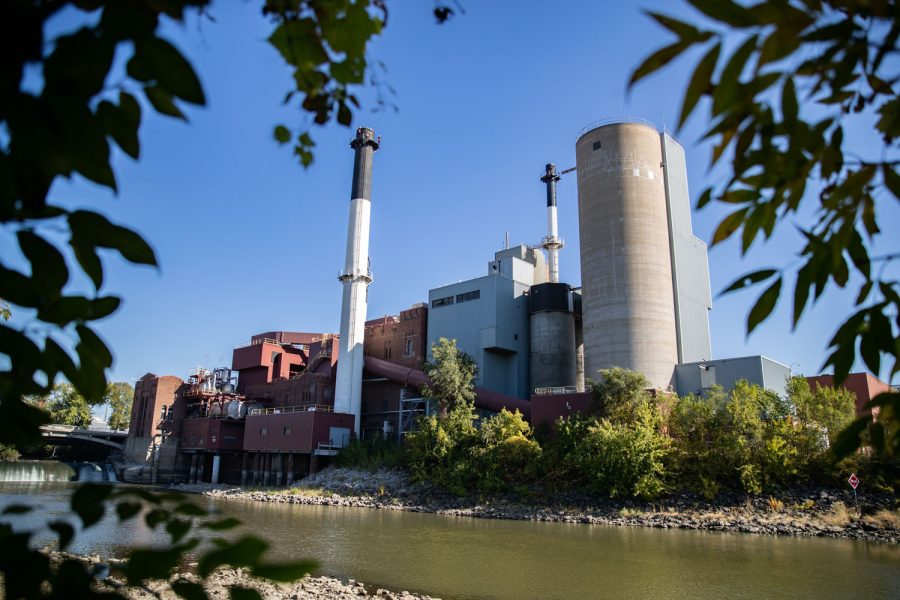UI tests biomass fuels to end campus coal use
The University of Iowa is experimenting with miscanthus energy pellets to replace coal burning as a way to provide steam and heat to campus.
The University of Iowa Power Plant as seen on Tuesday, Oct. 19, 2021.
October 20, 2021
In the attempt to transition the Oakdale Utility Power Plant off coal by 2025, the University of Iowa is struggling to find a product that can produce enough steam needed to heat campus building and keep campus operating.
The university is experimenting with biomass fuels, UI Director of Utilities Operations Ben Fish said. In particular, the university is testing the burning of oat hulls, miscanthus grass, and energy pellets alongside the remaining coal, he said.
The university has been burning oat hulls since 2003, Fish said. Now, they are focusing on miscanthus grass, and they have seen benefits from using it, he said.
The miscanthus grass is planted on roughly 1,100 acres that the university leases from farmers across the state, Fish said. Once harvested, the grass is put into an energy pellet, made from compressed organic matter that is used to create energy, and is burned to create steam.
UI Office of Sustainability Director Stratis Giannakouros said the testing process must be done at a slow pace. The potential for something to break in the boilers forces the engineers and staff to only test when heat is not needed on campus, like in the spring, he said.
Fish said it is a constant loop of trying something, finding what broke or went wrong, fixing and re-engineering the problems, and trying again.
“The question is how many times we will have to do that iteration until we can get completely off coal,” Fish said.
Joe Bolkcom, the UI Center for Global and Regional Environmental Research outreach and community education director and a Democratic state senator from Iowa City, said there are several reasons why the university’s plant can’t be shut down completely.
“It produces steam, which is a really important part of heating campus, especially when you take in the University of Iowa Hospital and Clinics,” Bolkcom said. “It becomes very difficult to replace that with some other source of energy.”
Another thing the steam is used for is sterilization at the University of Iowa’s Hospitals and Clinics, Giannakouros said.
There are pathways to change the steam infrastructure on campus, such as other forms of electrical heating and sterilization, Giannakouros said. But the project would require an exorbitant amount of money and it would not be feasible to do, he said.
Fish said he hopes that the university reaches its 2025 goal of no more coal burning by a distance. Once the university reaches its 2025 goal, the next step will be eliminating natural gas usage on campus, he said.
An Iowa State University report outlined the economic impact of shutting down the remaining Iowa coal power plants, but the University of Iowa’s coal power plant was not included in the report.
Fish said the university’s coal power plant differs with the plants mentioned in the report. The UI uses the steam produced when burning coal at its power plant to provide heat to campus, whereas the remaining plants burn coal to produce electricity, he said.
Fish said 25 percent of the power plant’s energy use is electricity and the other 75 percent comes from steam.
“That makes the power plant at the University of Iowa quite a bit different than electrical generating stations,” Fish said.
In the effort to switch from coal to biomass fuels, Fish said one of the important goals utilities staff kept in mind was being cost conscious during the transition.
“One of our underlying principles has always been that we feel like we should be innovative enough that we can switch from coal to renewables without increasing our costs to the university,” Fish said.



